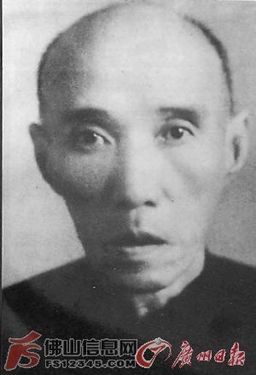Singapore Wing Chun Academy I Wing Chun Singapore
Great Grandmaster Yuen Kay San
by Li Jie
Wulin (Martial World) Magazine, 1993

Wing Chun Kuen is an outstanding Chinese skill. It has spread widely and become a popular form of boxing in nearly 30 countries and regions of the world today. The American Seventh Fleet, many security organizations, and even military and police in Europe and Southeast Asia have made it as a required course for daily training. Not long ago, parts of the army, police and law enforcement units in Australia replaced karate, judo, and tae kwon do with Wing Chun Kuen and made it a required course of study. Even Australian Prime Minister Hawke is an ardent proponent way of Wing Chun Kuen.
During the end of the Ming Dynasty and the beginning of the Qing Dynasty, Wing Chun Kuen spread from its origins in Sichuan province through several generations. It spread in succession to Fujian and into the Guangdong area. In the early years of the Republic of China there lived in Foshan, Guangdong a famous and wealthy merchant named Yuen Chong-Ming. His forth son, Yuen Chai-Wan and his fifth son Yuen Kay-San were unrestrained and mischievous youths yet they were very fond of practicing the martial arts. Particularly Yuen Kay-San who would come to be called "Foshan Yuen Lo Jia (Yuen the Fifth of Foshan)" by future generations. He was intelligent, had a natural talent and his powers of comprehension were considerably advanced. Their father loved his sons and knew of their talents. Sparing no expense in order to provide them with an opportunity he made a gift of heavy gold, worth as much as a an entire street complete with buildings, in order to hire the famous Fok Bo-Chuen to teach them the skills of Wing Chun Kuen. The Yuen brothers studied hard constantly for many years, learning the complete system of Wing Chun Kuen, including the Dummy, Knives, Pole, and Darts, and attained the Iron Sand Palm. Going on to surpass even their teacher in skill.
Yuen Kay-San had a famous blood relative who, during the Qing Dynasty, had once been the Governor of Sichuan province. One day, having reason to make a courtesy call to the government office, he met the famous Bo-Tao (Marshal) Fung Siu-Ching, the mere mention of whose name would make even strong criminals become terror stricken. Fung the bounty-hunter was renowned in Wing Chun Kuen circles for being extremely advanced with skills exceeding the remarkable. The Yuen brothers, seeking more advanced attainments this time left behind vast amounts of silver. Fung Siu-Ching was in the process of ending his career, but he delayed retirement when they invited him to the "mulberry garden" There he agreed to supervise their training. Yuen Kay-San possessed considerable advanced knowledge and foundation. He studied the theory of Wing Chun Kuen skills, understanding its scientific nature, blending it together and linking up the points. He achieved a complete understanding of Wing Chun kuen and developed a theory that lay its foundation.
Later, Yuen Chai-Wan went to Southeast Asia to pass along Wing Chun Kuen. Yuen Kay-San went on to teach Wing Chun Kuen to people who changed it and made it famous around the world. Much of Wing Chun Kuen in the world today comes from Yuen Kay-San, inherited from the past.
During the end of the Ming Dynasty and the beginning of the Qing Dynasty, Wing Chun Kuen spread from its origins in Sichuan province through several generations. It spread in succession to Fujian and into the Guangdong area. In the early years of the Republic of China there lived in Foshan, Guangdong a famous and wealthy merchant named Yuen Chong-Ming. His forth son, Yuen Chai-Wan and his fifth son Yuen Kay-San were unrestrained and mischievous youths yet they were very fond of practicing the martial arts. Particularly Yuen Kay-San who would come to be called "Foshan Yuen Lo Jia (Yuen the Fifth of Foshan)" by future generations. He was intelligent, had a natural talent and his powers of comprehension were considerably advanced. Their father loved his sons and knew of their talents. Sparing no expense in order to provide them with an opportunity he made a gift of heavy gold, worth as much as a an entire street complete with buildings, in order to hire the famous Fok Bo-Chuen to teach them the skills of Wing Chun Kuen. The Yuen brothers studied hard constantly for many years, learning the complete system of Wing Chun Kuen, including the Dummy, Knives, Pole, and Darts, and attained the Iron Sand Palm. Going on to surpass even their teacher in skill.
Yuen Kay-San had a famous blood relative who, during the Qing Dynasty, had once been the Governor of Sichuan province. One day, having reason to make a courtesy call to the government office, he met the famous Bo-Tao (Marshal) Fung Siu-Ching, the mere mention of whose name would make even strong criminals become terror stricken. Fung the bounty-hunter was renowned in Wing Chun Kuen circles for being extremely advanced with skills exceeding the remarkable. The Yuen brothers, seeking more advanced attainments this time left behind vast amounts of silver. Fung Siu-Ching was in the process of ending his career, but he delayed retirement when they invited him to the "mulberry garden" There he agreed to supervise their training. Yuen Kay-San possessed considerable advanced knowledge and foundation. He studied the theory of Wing Chun Kuen skills, understanding its scientific nature, blending it together and linking up the points. He achieved a complete understanding of Wing Chun kuen and developed a theory that lay its foundation.
Later, Yuen Chai-Wan went to Southeast Asia to pass along Wing Chun Kuen. Yuen Kay-San went on to teach Wing Chun Kuen to people who changed it and made it famous around the world. Much of Wing Chun Kuen in the world today comes from Yuen Kay-San, inherited from the past.
